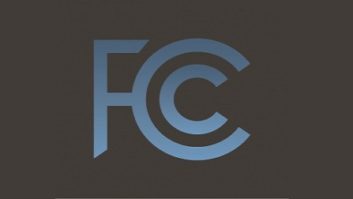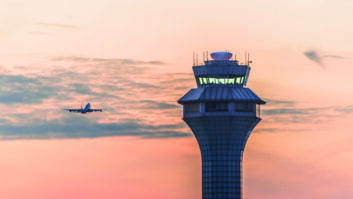So, all-digital on the AM band … a good idea or a bad one?
The Federal Communications Commission is asking for the public to weigh in on a proposal that would allow U.S. radio stations on the AM band to transmit solely in a digital format.
As we’re reported, Bryan Broadcasting Corp. in March asked the commission to initiate a proceeding to authorize the “MA3 all-digital mode of HD radio” for any interested AM radio station. According to its petition, this kind of modernization would give AM broadcasters a “needed innovative tool with which to compete” without impairing other competitors in either the broadcasting or general spectrum-usage ecosystem.
The commission is now looking for comments on the issue under Media Bureau docket RM-11836 in the FCC’s ECFS database. Interested parties have until May 13 to file comments.
Radio World recently published an ebook on the question “What’s Next for All-Digital AM?” Ben Downs of Bryan Broadcasting was among those commenting in that publication; the ebook includes comments from skeptics as well and reviews some of the obstacles to possible implementation; read it here.
But now interested parties are telling the FCC directly about what they think. The filed comments so far are mixed.
LPFM advocacy group REC Networks said that it supports AM stations changing to MA3 mode, but in a manner that addresses various public interest issues and concerns.
“One of our biggest concerns with the wholesale ability for AM licensees to specify all- digital operation, albeit voluntary, would be the loss of first or second localized AM broadcast service to particular areas,” wrote REC Networks founder Michelle Bradley.
An amateur radio operator from Missouri expressed concerns about forcing AM broadcasters to convert.
“It would not be in the best interests of AM broadcasters to force a conversion from spectrally efficient analog broadcasting to spectrally inefficient digital broadcasting, especially in the MA3 standard,” wrote Eric S. Bueneman from Hazelwood, Mo. “Analog broadcasting on AM only takes up 10 kHz of spectrum; it provides a decent quality sound. The MA3 standard wastes 40 kHz of valuable spectrum space.
“Such a forced conversion would not benefit consumers,” he wrote. “They would be required to shell out money they don’t even have to buy new receivers. MA3 is not compatible with current AM receivers, and should not be implemented.”
[Read: Bryan Broadcasting Asks FCC to Allow All-Digital AM]
According to Bryan Broadcasting in its petition, the AM band is overwhelmed by interference and impulse noise — so much that the resultant audio product is “rendered unacceptable to modern listeners.”
“[T]esting tellingly showed that the noise floor jumped from anywhere between 10 dB and 40 dB between the 1970s and the early 2000s (i.e., even before widespread acceptance of millions of interference- contributing technologies as phone chargers, compact fluorescent lamp bulbs, and flat-screen TVs),” the broadcaster wrote in its petition.
“Even setting aside empirical demonstration, one only has to listen to an AM broadcast inside a home where smart phone chargers and computer monitors are operating to understand the magnitude of the problem.”
Since it’s logistically unrealistic to expect to reverse the “spurious noise emissions” that come from these Part 15 devices, Bryan said, it’s necessary that the commission consider taking action to ameliorate harms to users of the AM bands, “otherwise, audiences desiring music programming will continue to turn away from AM broadcasts.”
The time has come, Bryan said, to allow AM licensees the option to license their station as all digital using the HD MA3 mode.
One of Bryan’s four AM stations, WTAW, is operating the HD hybrid model MA1, which the broadcaster said has proven free of noise. “To listen to WTAW in hybrid HD is to listen without the noise, pops and buzzes that plague analog AM today,” Bryan said in its filing. According to Bryan, the MA3 option represents a superior solution: it is not as fragile, it doesn’t succumb to drop outs in places where no obvious cause exists.
“[MA3 AM HD] provides a listening experience without the impossibly hostile noise found on the current AM band,” Bryan Broadcasting said. “It allows AM broadcasters to program audio to a market that expects to hear digital audio, giving AM broadcasters a platform from which they can compete. It is time to allow licensees to have this tool in their kit to fight AM audience loss.”
[Subscribe to our newsletter and get it delivered right to your inbox.]







